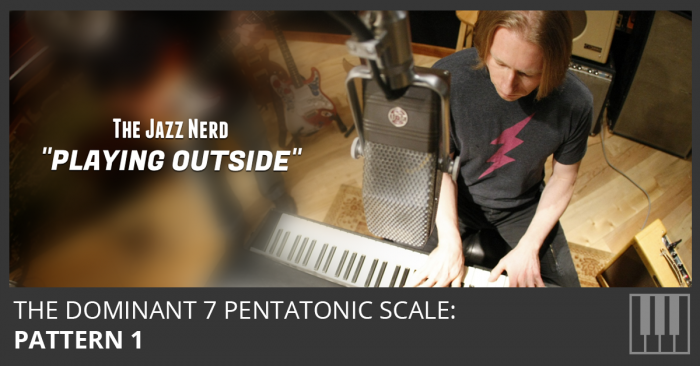
John Coltrane loved the Dominant 7 Pentatonic Scale.

C7 Pentatonic Scale
During the 60s, Trane (and other avant-garde musicians like Ornette Coleman) created a unique and dissonant style of “playing outside” the chord changes. Often, they would play a half-step above the tonic mode. This technique creates extreme harmonic tension.

D flat 7 Pentatonic Scale
You might think that it’s easy to play in the key of D flat over the key of C (or not), but Coltrane and Coleman were masters of tension and release. They would weave in and out of the tonic as if they were tearing harmony apart and rebuilding it.
This series of patterns is designed to make you comfortable switching between two modes a half-step apart. This series starts simple and gets more complex as it goes.
This four-note pattern changes modes every two beats. Practice this pattern in all keys.

The Dominant 7 Pentatonic Scale Pattern 1

John Milner says
Great resource. I need to spend more time checking this out.
Graham English says
Glad you like it John! Thanks for commenting.